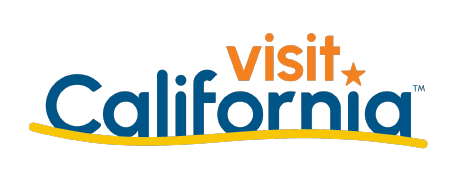Sun, Sand & Waves
Ventura is Southern California’s whispered secret. A real deal surf town with empty beaches that call to surfers, swimmers, kayakers, and beach-lovers who just want to relax. Loll on the sand in the sun or plunge into the ocean and grab some ocean fun yourself. Our beautiful beaches and ocean playground await you.
Kid-Approved Fun
Load up your tiny travelers for family fun. Enjoy a playful day at the beach, cruise the open ocean looking for whales, or pedal boat the serene waters of small, kid-friendly Ventura Harbor. Slurp ice cream and explore Harbor Village (carousel!). Monkey around at our scenic parks and playgrounds. Moments to make lifelong memories.
Get Movin’
Explore Ventura on two feet or two wheels! Stunning hiking and biking trails (and road rides) wind throughout Ventura; trails that suit all abilities, so that anyone (even your pooch) can enjoy breathtaking seascapes or quiet oak glens. Or both. Happy choice.
Explore the Islands
Resting off Ventura’s coast, the five islands that comprise Channel Islands National Park are a wonderland like no other. Sweeping ocean views, tiny foxes, lifetimes of hiking, sea cave kayaking, and backcountry camping. All of this in one of our country’s least visited national parks.
Stay
In Ventura we specialize in seaside breezes and ocean views. Hotel, campground, or RV park; we take pride in walkability to the sand. Plus, every range of stay; from full-service hotels, to budget motels, to, yep, oceanfront camping.
Local Libations
Ventura has experienced a happy explosion of craft breweries and wineries, even a spirits distillery; they have created a liquid symphony, perfectly blended and played on your tongue, courtesy of brewers and vintners who relish the word experiment. They are pouring those delicious tastes all over town.
Blog
Neighborhoods
Get familiar with the Ventura neighborhoods and the major attractions within, using this interactive map.
A Whale of a Time
Just off Ventura’s coast, the Channel Islands National Marine Sanctuary is a cruising ground for whales, dolphins and porpoises. Wildlife cruises and whale-watching charters offer guests the chance to witness Nature’s magnificence all year long. Never seen the largest animal on the planet? Here’s your chance.
What’s Happening
There’s never a dull moment in Ventura. Here’s proof.
16
28 West Main Street
Ventura CA, 93001
(Sunday) 12:00 pm 04:00 pm
Gallery Exhibit: Ann Diener, Ralph Corners, Scott Chatenever
19
Crowne Plaza Ventura Beach
450 E Harbor Blvd
Ventura CA, 93001
(Friday) 8:00 pm
Dueling Pianos
1
2750 East Main Street Unit B2
Ventura CA, 93003
(Friday) 7:00 pm 9:00 pm
Jest Improv’s First Friday Show: Short Form Shenanigans!
4
1793 E Main Street
Ventura CA, 93001
(Friday) 06:00 pm 05:00 pm
Art + Ale . Spring Art Fair & Craft Beer Event
12
47 S Oak St
Ventura CA, 93001
(Friday) 07:00 pm 9:00 pm
Improv Comedy at NAMBA Every 2nd Friday
27
26 S Chestnut St.
Ventura CA, 93001
(Sunday) 06:00 pm 11:00 pm
Tom Green – “Home To The Country” Tour
3
1888 E Thompson Blvd
Ventura CA, 93001
(Saturday) 07:00 pm 11:00 pm
Goodspeed You!
6
Ventura County Fairgrounds
10 E Harbor Blvd
Ventura CA, 93001
(Friday) 02:00 pm 10:00 pm
7th Seaside Tattoo Show
Fun with Fido
There’s no need to explore without your pooch! Ventura is as dog-friendly a town as you’ll find anywhere. We’ve got dog-friendly beaches, restaurants (complete with mutt menus) and hotels. Ventura wants your pal to come along. Because double the fun is more fun.
Be seen
@visitventura
730
@visitventura
610
6
@visitventura
370
6
@visitventura
581
4
@visitventura
1627
28
@visitventura
729
17
@visitventura
1423
23
@visitventura
665
4
@visitventura
3881
58
@visitventura
726
5
@visitventura
1378
18
@visitventura
697
9
@visitventura
850
10
@visitventura
683
5
@visitventura
1645
19
@visitventura
763
8
Tag your pics with #visitventura
Ventura Partners With








13